Check out some books by your tutor Fiona Veitch Smith … (click on the book covers to find out more)
 This is the second session of eight in our online creative writing course, in which we’ll be exploring how to write a short story. Now that your creative juices have been stirred, you should be ready to start writing; if not, go back and try some of the exercises in the first session of this course, releasing your creativity.
This is the second session of eight in our online creative writing course, in which we’ll be exploring how to write a short story. Now that your creative juices have been stirred, you should be ready to start writing; if not, go back and try some of the exercises in the first session of this course, releasing your creativity.
Writing short stories versus writing novels
Most new prose writers have the beginnings of at least one novel in their drawer. They will get to chapter three or four and give up because they don’t have the skill, confidence or stamina to carry on. If you’d never run a marathon you would be a fool to enter the Great North Run without first attempting some shorter distances. Short stories are the best place for new writers to hone their craft. But don’t be fooled, they’re not necessarily the easiest option. It takes a great deal of skill to write a short story that’s effective – you will have to curtail any tendency to ramble on. And not all writers need to be novelists either. I believe F. Scott Fitzgerald was quite comfortable as a short story writer and only produced the occasional novel out of pressure from his publisher, while the great Raymond Carver never wrote a novel in his life.
Short stories are an endangered species
There was once a time when every magazine carried some short fiction. Sadly, that time has passed. Now, apart from some weekly women’s magazines in the UK, short stories have retreated between the dusty covers of literary publications. The situation has become so bad that a group of leading writers and publishers got together to start the Save the Short Story Campaign and are beginning to make good progress.
Short stories appear to be doing far better across the pond in America where the art form is more respected and accessible to ‘ordinary’ readers. However, there are signs that this may not continue. Read Stephen King’s thoughts on the decline of the American short story. You can check out Writer’s Market for a list of North American short story outlets.
How long is a short story?
So what is a short story? Short stories can be anything from 500 to 6000 words. Anything under 500 words tends to be labelled ‘flash fiction’ or ‘micro fiction’ (although some would argue it’s still a short story) and anything over 6000 is moving into novelette or novella territory. I would argue that a short story is something that can be read comfortably in one sitting and doesn’t leave you starving or bloated. Popular magazines tend to accept work of between 1000 – 2000 words, more literary ones go for longer. Children’s short stories tend to be under a thousand words. If you would like to write for younger readers, check out some of my articles on writing for children.
A short story is a slice of life
A short story is a slice of life. As such, you should narrow the time frame and geographical location of the piece. One plot, two or three characters and no more than two locations (one would be better) should fit into a short story. If this is too tight a fit perhaps you should be writing a novella or a novel.

Fig 1: Short story time span
How to begin a short story
Start your piece as close to the turning point or climax of the story as possible. Most writers take a paragraph or so to find their feet. On a second reading they will delete the first paragraph as unnecessary exposition or padding. Your first sentence is crucial; it should be filled with energy, intrigue and forward momentum. The reader should be stopped in their tracks and not be able to turn away until they’ve read the whole thing. The first sentence should raise questions that need to be answered. Take for example these openers:

- ‘My mother was making me a dress.’ (From ‘Red Dress – 1946′, Dance of the Happy Shades)
- ‘General Sash was a hundred and four years old. ‘ (From ‘A Late Encounter With the Enemy’, The Complete Stories)
- ‘Fact is the car needs to be sold in a hurry, and Leo sends Toni out to do it.’ (From ‘Are These Actual Miles’, The Oxford Book of American Short Stories)
Exercise 4: Jot down questions that arise from these openings and what, if anything, makes you want to read on. If you can get hold of copies of the stories do so. Ask yourself: were the questions answered? Was I satisfied with the answers? Was the answer what I expected?
Exercise 5: Use a trigger image, phrase or thought (see Releasing Your Creativity) then write down a leading, opening sentence. What questions might be raised? How might you answer those questions in a short story? What setting would be most appropriate to answer the questions? How long will it take for the question to be answered? Can you think of any characters that might help you tell the story and answer the question? (We will be looking at building a character in a future session and try writing another story from their perspective). Look over your answers and see whether or not the outline of a short story is emerging. If not, try another sentence or another trigger image.
Beginning, middle, end
Every short story should have an opening that is developed in the middle to build tension which reaches its climax towards the end, after which there is a rapid conclusion. For those of you who have studied any dramatic or literary theory you will recognise this progression as typical Aristotlean Three Act Structure. In a short story you should not spend too much time in the ‘first act’ where development, setting and exposition take place, and should start your narrative as close to the inciting incident (aka point of change, first turning point or initial crisis) as possible. The inciting incident is the event which upsets the apple cart of the characters’ ordinary world and compels them to act in a certain way in order to bring balance or closure to their disrupted environment. In the Red Dress it is the school dance which the narrator fears will bring humiliation. She then tries to fake illness in order to get out of it, then, when this fails, tries to remain as invisible as possible at the dance. We will look at how a character acts to bring or avoid change change in a future discussion.
Exercise 6: What is the ‘ordinary world’ of your opening sentence? Remember, this may be an abnormal world to most readers, but it should reflect the status quo of your characters before it is challeged or shaken up. What challenges this status quo? This is your inciting incident. Using only three paragraphs (50 – 60 words each) or less, start writing your short story. In this short space you should establish your ordinary world, your main character and the inciting incident of your story.
Obstacles, setbacks, climax and resolution
This is the outline of the rest of your story. Imagine a graph of building tension.

Fig 2: Dramatic development in three act structure
Your story should follow that arc by allowing your character to face obstacles, setbacks and minor victories on the way towards reaching the dramatic climax and bringing resolution.
Exercise 7: If you are graphically minded draw yourself a rough graph or jot down the beginning, middle and end of your story. Now write the story and fill in the gaps. If you’re not so graphically minded, just jot down a few key phrases or events that might carry your story forward to a possible conclusion. Don’t worry, this isn’t cast in stone, and you can change the beginning, middle, end and anything in between at any time. Many writers just write to find their voice. That’s fine. Once you have a first draft, go back and see if it has some kind of structure or arc. If not, you may have to tweak it a little.
I hope this has given you some insight on how to write a short story. Happy writing!
The next creative writing course session is writing from a point of view.
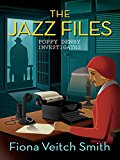

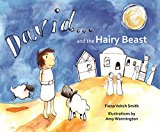
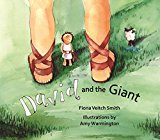
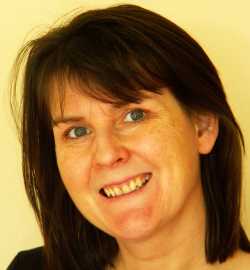 Welcome to The Crafty Writer's free online creative writing course, presented by Fiona Veitch Smith, a freelance journalist, editor, author, playwright, screenwriter and writing teacher. I hope that you'll see a dramatic improvement in the quality of your writing as you work through this course.
Welcome to The Crafty Writer's free online creative writing course, presented by Fiona Veitch Smith, a freelance journalist, editor, author, playwright, screenwriter and writing teacher. I hope that you'll see a dramatic improvement in the quality of your writing as you work through this course. 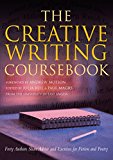
In exercise 6, am I just to describe whats suppose to happen in my short story? ex:) paragraph 1 is a summary of my beginning, Paragraph 2 my middle, and 3 my end. Or am I actually writing it and creating dialogue?
Hello Kendall, the exercise is asking for you to write the first three paragraphs of your short story up to the inciting incident. The aim is to try to get you to establish your ordinary world and what comes along to change it as quickly as possible. A lot of writers take too long to do this. What you are thinking about with the beginning, middle and end paragraphs is an outline of the whole story. That’s not what as I was getting at here.
Happy writing
Fiona
This is simply wonderful! When writing I always tend to veer off at a tangent and bog down my writing with too many unneccessary details. Completing the exercises above has help me adhere more strictly to the relevant bits which will keep the reader rivetted! Thank you for the insight.
You’re welcome Anna. Good luck with your writing. Fiona.
I must say that this was my first attempt ever to write (well except some poetry in high school long long ago). I started out banging my head but finally I got it (after several re-writes). I think taking that first leap was the hardest.
Good for you, Valerie! One small step will lead to many more. Happy writing,
Fiona
I am just loving this course. I was pretty sure I could write but didn’t know the first thing about setting up a story line and this course has been a godsend. I have enjoyed all of the exercises so far and am very pleased with what I have learned.
Thank you very much!
YOu’re welcome Kathy. Happy writing!
i wrote a story about 3 software engineers. One of them steals from the company, is caught and agrees to a sexual tryst between he and the boss to keep from going to jail. During the act he dies and the boss flees the scene. They catch the boss and persecute him to the fullest extent of the law. Then it’s suddenly over. I don’t if it should be a novella or a short story. The plot is not very interesting. But it reads okay and the dialogue is pretty good. Overall, I think i did pretty well on my first short story in 28 years.
That depends on its length. A short story is fewer than 5,000 words. If it’s ‘suddenly over’ and the plot isn’t very interesting it sounds like you should be expanding it. Don’t worry whether it’s a novella or short story at this stage, just write it until it is interesting and see what comes out of that.
It was very informative. I like the graph idea and using keywords to marks areas of the story. If you were to repeat that graph one after the other maybe 4 or 5 times, only bringing the conclusion line down completely on the last graph, you would have the structure of a novel, wouldn’t you?.
Hi Michael, the graph can be applied to any narrative form: short story, novels, films, plays. I use it to plot all of them. It represents the shape of the story rather than the length.
Well, except for the necessarily short beginning.
I’m loving this. I don’t get time to do the course straight through but when I do get a few minutes and I work through the exercises – I’m loving the results.
Loved this exercise! Using a picture of our recently departed cat that happened to be sitting by the computer as a trigger image, I took the opportunity to write about our lives with her from beginning to end. It brought back many happy memories and truly helped in the healing process. Thank you Fiona!
Oh I’m so glad that it’s helped you! With your writing and healing the memories of your cat.
I write short stories all the time. I use them to keep me going when I hit a rut on a novel I’m working on (which seems to happen all the time). Within the last year, I have been trying to sell three of my short stories. I keep getting the same letter that all struggling writers hate, but I’m still going for it. The thing that irks me the most about trying to sell my work is the response time. I NEVER hear back from the magazines when they say I will, and I worry that my work is just sitting there, unopened, unread, and not enjoyed. I have considered calling the magazines to make sure they recieved my work, but I’ve read in numerous places that they are often extemely busy pouring through all the work they are sent. Is it alright to call and inquire on the status of my stories? Or would I just be told to wait any way?
Hi again Lakin,
If a magazine want your story they will call. I know it’s frustrating for writers (and very rude on behalf of the magazines) but if they aren’t interested they rarely bother contacting you to tell you. If you haven’t heard within six months perhaps you could call, but don’t be surprised if the answer is ‘no’ or we haven’t got around to it yet. If the answer was yes you would already have heard.
Oh, and by the way, I love short stories. Stephen King is my absolute favorite writer and I am hoping to collect all his short story books. Right now I’m reading “Nightmares and Dreamscapes”, though I really enjoyed “Skeleton Crew”. My favorite short story in that book was the one about the doctor who crashed a plane with a load of illicit drugs on a deserted island and out of desparation eats himself beginning with a foot and moving on up his legs. It’s a great read, especially for a fan of horror and the macabre. Any way, my point was that I am surprised to read that the short story is on a downward spiral in popularity. I feel that they are an important part of literature. Even if the short story loses some of it’s bang with readers, I will continue to write them out of my love for them. =]
Hi Lakin,
Short stories are only down in popularity with publishers. Think of the last time you were in a bookshop. How many shelves were devoted to short story anthologies? I doubt even one. This course was written 6 years ago before the e-book revolution really gained momentum. Short stories are getting new life from it! Hurrah! I also enjoy Stephen King short stories, but not his horror. I prefer his dramas.
Happy writing!
Hi Fiona,
I did well at the first session of your course but I find that I’m having the most trouble here. Activity 5 wants us to use a trigger to develop an opening sentence. I find that I can’t come up with so much as a sentence without knowing the entire story I wish to write about first. Does the exercise want us to develope a sentence in hopes that we can expand upon that after the fact? I feel like I can’t write a word without knowing where every detail lies.
Also, what is meant by “Start your piece as close to the turning point or climax as possible”? Forgive me, I’m so inexperienced at this, but does that mean we should begin the story with middle and work backwards? I imagined that the turning point is later in the story, after it’s been developed.
I appreciate your input here and I’m loving the course so far. I’ve been dreaming of writing an this is so motivating. Thank you!
Sue
Hello Sue, if you are tied in to the end before you’ve even started this will limit the creative directions your story can go in. So just allow yourself to write something without knowing where it is going to end – just for now. You need to be prepared to just throw it away if it doesn’t work. Starting as close to a turning point as possible is just another way of saying: cut back on the set-up and introductory remarks and get to the first significant action of the piece as soon as possible. The first turning point or ‘inciting incident’ takes place within the first few pages of a short story. So cut the waffle. There will be further turning points as the story develops. Hope this helps!
Fiona
The exercise 7 was very challenging and it took me a while to write my first draft but I am happy with the result. Thank you Fiona!
I love this exercise. I have got my opening line and I can see a story developing. I hope I can keep it short. My problem is I get carried away and end up waffling so I will be very careful. I have wanted to write for years and am hopeful this will be the confidence booster I need. Thank you Fiona
You’re welcome Angela. Sometimes ‘restrictions’ on word count or form can be liberating. Happy writing.
Hi Fiona
Not that I think that my stories are worth stealing, but if I was to write the best story that has ever been written how do I protect it from thieves without paying a fortune? Also don’t understand exercise six. What do you mean by ordinary world? Is it the world/lifestyle of the characters?
Hello Gale, regarding your first question, basically you can’t. You cannot buy copyright protection. What you can do is sue somebody for stealing your work. But this requires time, money and energy. Also, in the internet age it is hard to track the perpetrators down. You can of course name them and shame them on related blogs and demand that they remove your story from their site. Keep up the pressure until they do. You could also contact the service provider of the website holder and ask them to take action against the perpetrator – assuming they can be found. If someone goes to print with your work it is easier to take action as there are physical names and addressed involved. You may want to read my article on the Crafty Writer blog on protecting your copyright although it is aimed mainly at journalistic articles, the principles remain the same. http://www.thecraftywriter.com/2007/08/20/protecting-your-copyright/ Regarding your second question, the oridinary world is simply a description of the situation we find your characters in at the beginning of the story before the inciting incident occurs (the thing that upsets the balance of your character’s ‘world’). So for instance, you write a story about a secretary in an office who one day discovers that the filing cabinet is a portal to another dimension. The ordinary world of this character would be her office, her routine, her dull interactions with co-workers etc. Whatever is ‘normal’ for that character. Of course, the ordinary world of a serial killer will look quite different …
Hi every one , basiclly Ifound it extrelly hard to write English creatvily , and iam still not sure how can Ido , actully ineed to overcome to this problem
Hello Hamid, why don’t your try doing these exercises in your home language? This course teaches you principles that can be applied in any language.
I was at a lost with what was acceptable as a short story. Until I took this course,I have learned a lot. Thank you!
You’re welcome Montika. Hope you grow from strength to strength in your writing.
Thanks a million for this site. It’s kick started my imagination up again and the ideas and exercises are just what I needed. Thanks again.
YOu’re welcome, Steven.
Pingback: Short story vs novels | A Writer's Journey
I’ve only read through the info on this second course and I’m looking forward to doing the exercises. Looks good!
Thanks Fiona!